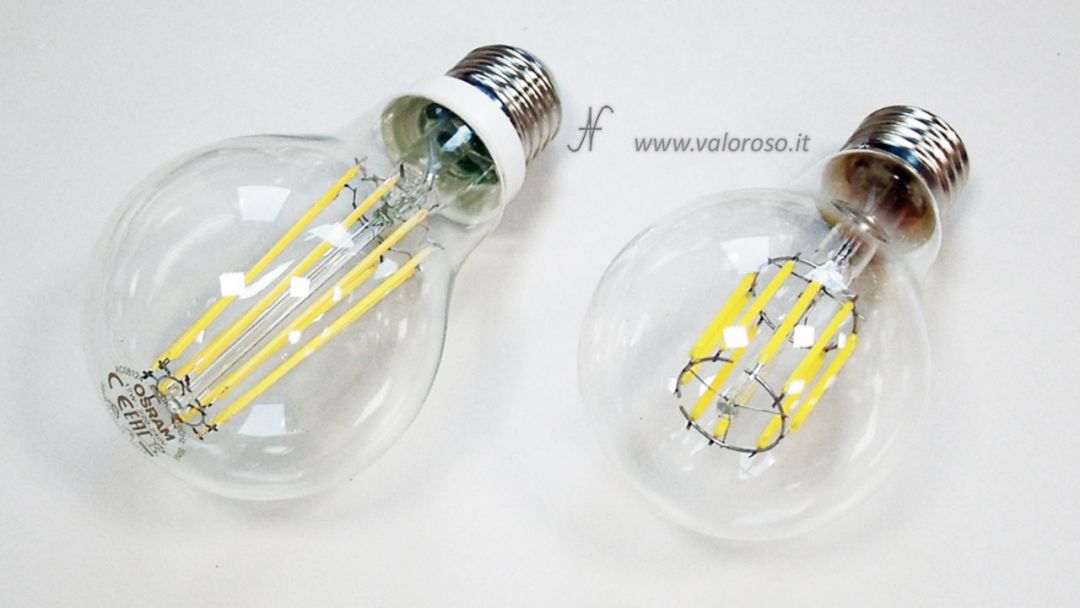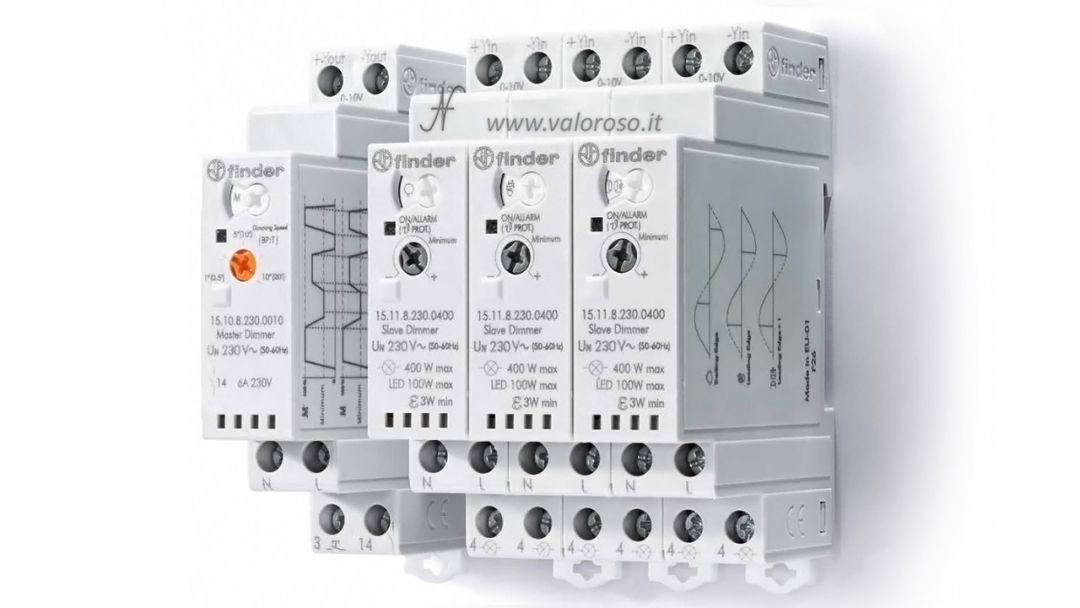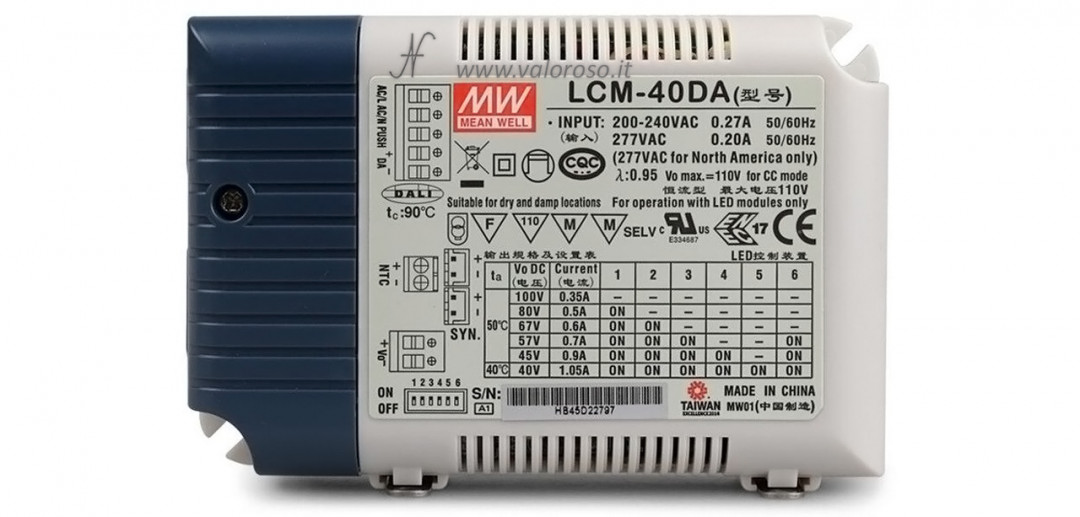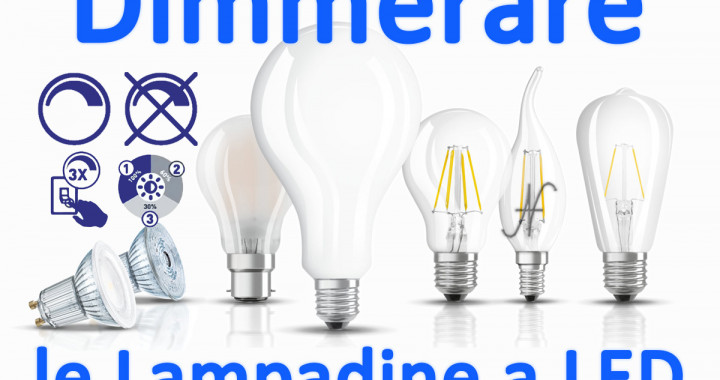Have you tried to dip an LED bulb and you only got flickering and buzzing? If it happened to you and you want to understand how it is possible to connect LED bulbs to dimmers, to vary the brightness, you are reading the right article!

In this article we talk about LED bulbs that operate at 230V mains voltage in alternating. If you want to reduce the brightness of LED lamps powered by direct current, low voltage for automotive use, I talked about it at the bottom of this article.
I recommend, when you put your hand to the electrical system, you have to remove voltage from the magnetothermic and, possibly, get help from qualified personnel!
What is the advantage of dimmable LED lamps over incandescent ones?
LED bulbs offer several advantages over traditional incandescent, halogen and CFL bulbs. In this paragraph we analyze some advantages, but... be careful! All that glitters is not gold!
A dimmable LED bulb does not change the color when it reduces the light intensity. On the contrary, an incandescent lamp tends to become more yellow as the brightness is reduced.

An LED lamp consumes less power: generally the ratio is 1/6 – 1/8 compared to an incandescent bulb with equivalent luminous performance. Compared to CFL fluorescent bulbs, consumption is lower, but the ratio is not as interesting.

By consuming less current, the LED bulb heats up less, but don't be fooled! LEDs also have a much lower tolerance to heat than traditional light bulbs. If you want to dip an LED bulb, so that it lasts as long as possible, it must be able to dissipate heat. If it is installed in a small, completely closed chandelier, your LED bulb will last very little.
LED bulbs, if they are of a good brand, last longer than incandescent and CFL fluorescent bulbs. Manufacturers claim that LEDs last 10 times longer than incandescent lamps, but again, don't be fooled! The LED can last a long time, but... the power supply inside the bulb is always the first component to get damaged! In particular, it is damaged by heat. So, it is true that LED bulbs last longer than traditional ones, if they are of a good brand, but they do not last as long as it is claimed.
How to connect an LED bulb to the dimmer?
Let's start right away with the bad news! LED bulbs, in general, are not dimmable! To reduce the brightness of LED bulbs, you have to buy prepared lamps.

I will write another article related to how to choose the best LED bulb for your needs. In this article I dwell on dimmability.
There are three types of dimmable LED bulbs:
- step dimmable LED bulbs;
- LED bulbs that can be connected to dimmers;
- LED bulbs with external power supply.
It is not possible to understand, by the shape, whether an LED bulb is dimmable. To check if a light bulb is dimmable, you have to look for one of these symbols (on the box, on the light bulb or in the description of the object when you buy it).

The leftmost symbol indicates that the light bulb is not dimmable. The icon in the center indicates that it is dimmable in step (but cannot be connected to the dimmer). The symbol on the right indicates a light bulb that can be connected to the dimmer and that can vary the light intensity continuously.

Lampadine a LED dimmerabili a step
A step dimmable LED bulb (usually three steps), cannot be connected to the dimmer.
It replaces a traditional incandescent bulb and, every time it is turned off and on again, the brightness changes: low brightness, medium intensity and full brightness.
It is a good solution if the electrical system of the house is not equipped with a dimmer to vary the brightness with continuous adjustment.
Dimming an LED bulb (with the dimmer)
If the electrical system of the house is equipped with a dimmer, it is possible to buy led bulbs that can be dimmed continuously.
LED bulbs are entirely a substitute for incandescent bulbs, both in shape and attack.
To dip an LED bulb, the choice must fall on a good brand bulb, dimmable continuously.

I recommend, before buying all the home bulbs of the same type, to try one! In fact, some dimmable LED bulbs tend to have a annoying stroboscope effect. With bulbs affected by this defect, moving objects seem to move in small spurts. The effect is most visible at night, when there are no other sources of ambient lighting.
Adjustments on the dimmer to reduce flickering and hum
Before turning on the LED bulb with the dimmer, try to check if your dimmer is settable. On some dimmers there are trimmers and adjustment selectors.

If the LED bulb flickers, especially with a very low brightness, it is good to set the dimmer with a minimum brightness a little higher, so as not to flicker the LED.
In addition, I recommend setting the dimmer (if it presents this possibility) on halogen (or incandescent) bulb. By setting the dimmer to other modes (e.g. fluorescent lamps or transformers), LED bulbs may emit loud buzzes and flicker, especially when the brightness is decreased.
If your dimmer provides the possibility of adjusting even the maximum brightness, I recommend not to exceed 80%. By setting the maximum brightness of the dimmer to 80%, instead of 100%, the life of the bulb will definitely increase.
Dimmable LED bulbs, with external power supply
There are LED lamps that operate at low voltage and are equipped with a separate power supply (driver).
To dimme this type of bulbs, you must check that the power supply is predisposed to vary the brightness. If it is not, you have to buy a power supply with adjustable output. Obviously the characteristics of the new power supply must be identical to the old one. In particular, I refer to the current of the LEDs (which must NEVER be higher than that of the previous power supply) and the voltage.

There are adjustable power supplies, which can be adapted to different types of LED lamps.
The new power supply must be prepared to vary the output current. In particular, you can opt for a power supply that is equipped with input with potentiometer or with a 0-10V input to be connected to the home automation system, if your home is equipped with it.
Or, the power supply may already have an input compatible with the protocol that is used in the home automation system, for example Konnex KNX, Control Casa or Dali.

If the LED bulbs always stay on?
It can happen that, when the dimmer is off, some LED bulbs still remain on! This situation happens because some dimmers still need a minimum output load and the LEDs, when adjusted at low brightness, have an absorption of less than the minimum.
In this case, to leave the LED bulbs off when the dimmer is turned off, you have to install, in parallel to the output of the dimmer (or, equivalently, in parallel to the LED bulb) a suitably calculated resistance, to simulate the absorption of a small load.
The resistance must be of power, at least 3W, Of 47000ohm – 68000ohm, which ensures minimal absorption when the dimmer is turned off. If only one resistor is not able to solve the problem, you can try to parallel two resistors, or to use one from 22000ohm, 5W of power. Among the various resistance options available, you have to choose a model that resists high voltages. The 230V alternating mains voltage has peaks of over 330V peak. Therefore the choice must fall on a resistor that can accept voltages of at least 350V (generally they are from 500V).

The alternative, if the chandelier is equipped with several bulbs, may be to leave an incandescent bulb between the various LED bulbs. This alternative, although faster to practice, is however less aesthetically pleasing.

Very useful article. Some things I already knew, but I didn't know about resistance.
Thanks so much!
I purchased dimmable LED bulbs with R7S socket to replace halogen
and their behavior is affected by the type of feeding.
1) Single bulb driven by simple switch: everything ok
2) Single bulb driven by dimmer (Ticino from apartment, I do not think settable): everything ok.
3) Two bulbs driven by a dimmer:
a) both installed: heavy flickering and at maximum brightness they turn off
b) only one installed and the other empty lamp holder: as above
c) One installed and the other lamp holder with the old halogen: everything ok
Electrotechnically speaking I do not explain it so much, but I think it has to do with a speech
Like the one addressed by talking about the resistance.
If with the halogen lamp in parallel to the LED one everything works, it is definitely a matter of minimum load. At this point, either replace the dimmer (with one prepared for LED lamps) or install the resistance in parallel. Take into account, as explained in the article, that the resistance can heat up and is powered by high voltage.